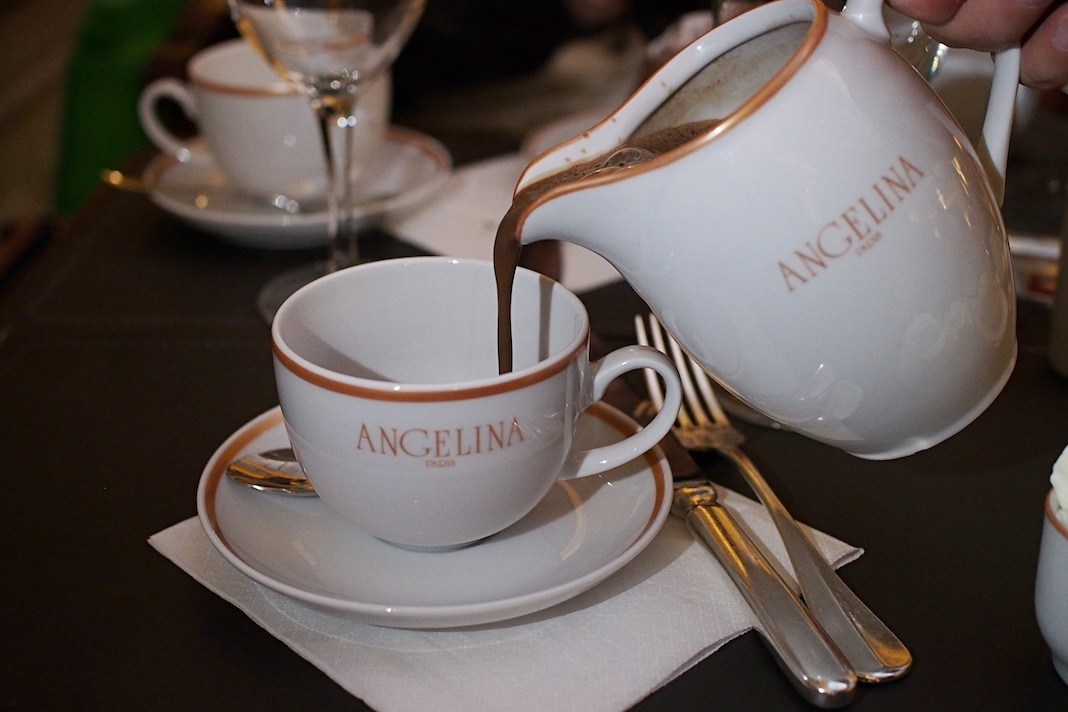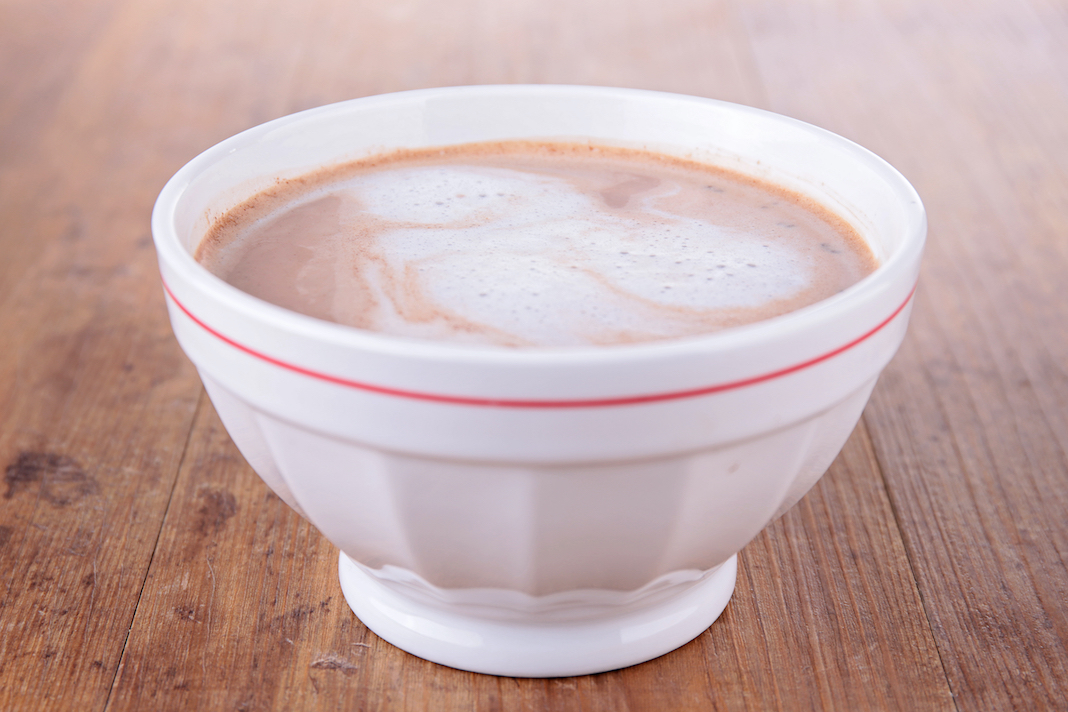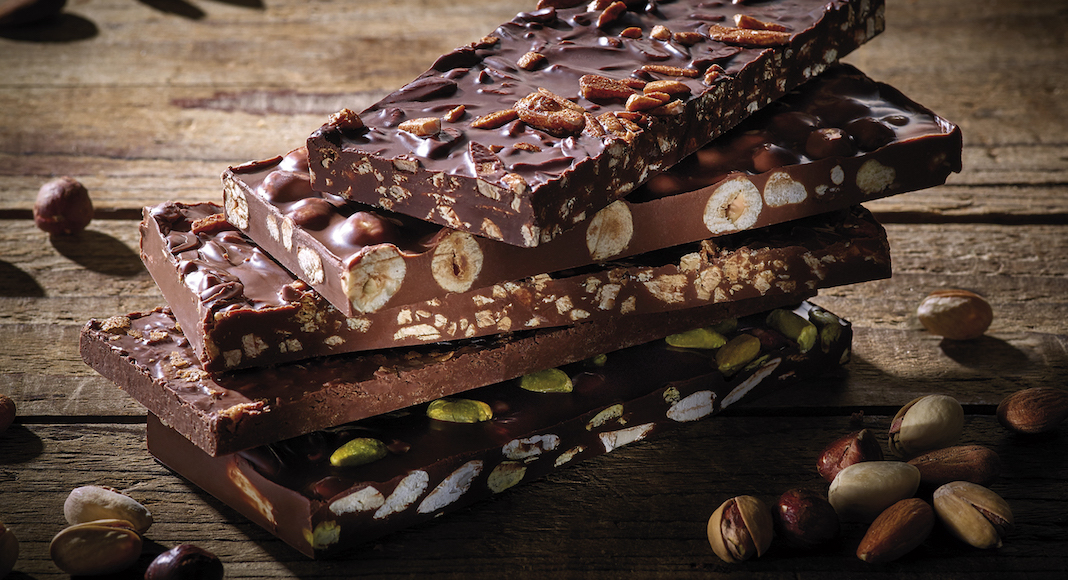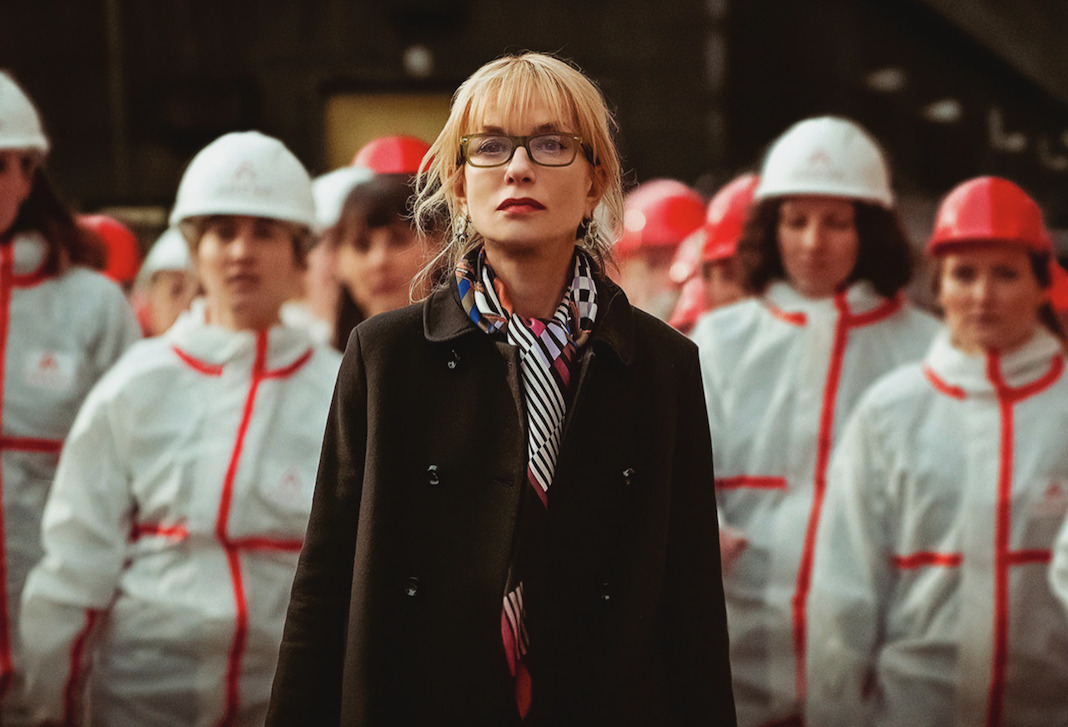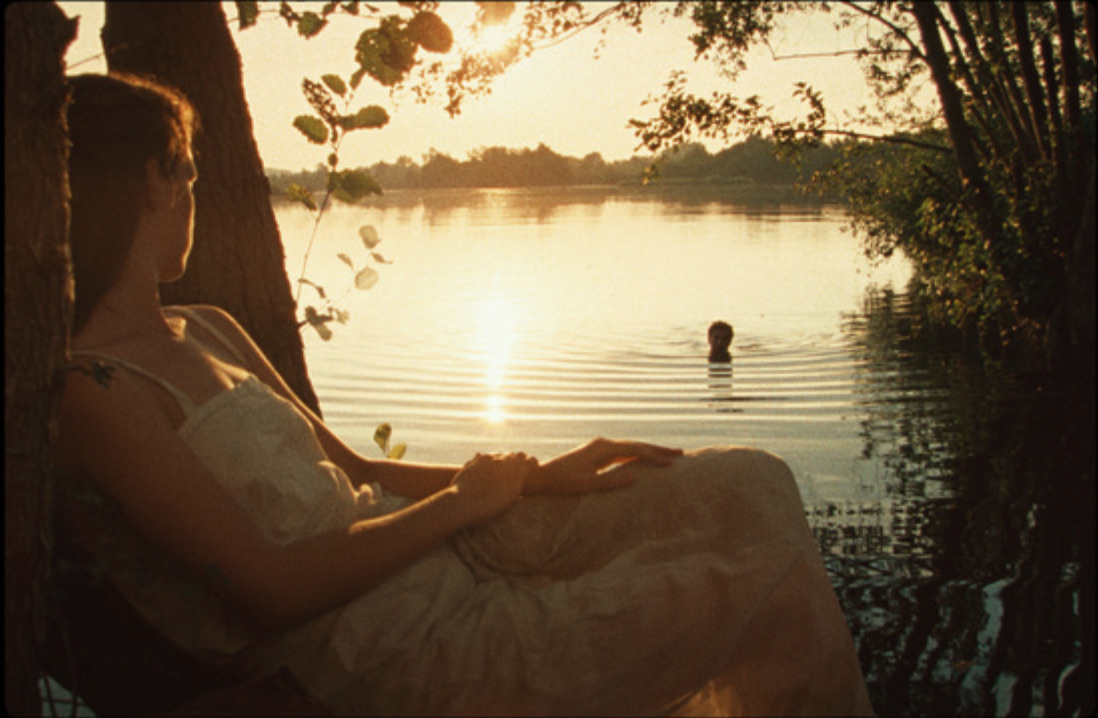December 08, 2023
Dear Frenchly Readers,
Chocolat chaud, as the French call it, is practically a national drinkmeal. No, grammar police, that is not a typo. I am putting those 2 words together because it’s sort of both. Served usually in a bowl in France, not a mug, and never with marshmallows, chocolat chaud is warming and filling like a bowl of soup and a drink in one. Kind of how the Irish feel about a pint of Guinness.
Children in France are treated to hot chocolate sometimes before school, as part of breakfast, and will dunk their tartines (toast) into it. But more often, kids have it in winter as the national afternoon snack known as le goûter, which is when both old and young take a break and have something that tastes good. In many households, for years and years, that snack is simply hot chocolate, along with a nice iconic French snack of a piece of baguette with a schmear of some nice Bretonne butter and a piece of dark chocolate in between. (This late afternoon snack, while the last vestiges of sunlight slip to the West, is often the reason the French can stall until an 8 PM dinner.)
But when did the French start drinking hot chocolate? Have they always been chocoholics? It’s hard to think of France without chocolate; the words French and chocolate are practically synonymous. The story is interesting:
Historians believe that the first hot chocolate was drunk by the Mayans around 3,000 years ago. Then, by around 1400 AD, or 600-ish years ago, hot chocolate became an integral part of the Aztec diet. However, it wasn’t sweet. Instead, it was a mixture of cornmeal, chili peppers, ground cacao beans, water and, sometimes, vanilla. This drink was poured back and forth in gourds or clay cups until foamy. But it was cold, not hot, bitter like coffee, and a symbol of privilege and wealth. The Aztecs called it “xocōlātl.” On Columbus’ fourth voyage to the Americas in 1502, white Europeans first recorded their knowledge of “discovering” cocoa. Then, after defeating Montezuma, Cortes returned to Spain in 1528 with cocoa beans and a pillaged stash of paraphernalia used to make the Aztecs’ valuable chocolate drink. (Montezuma is remembered in history as having drunk 50 cups of hot chocolate a day. Balzac apparently drank 50 cups of coffee a day. Not sure either is true…)
Back home in Spain, the stolen recipe became a drink for nobles and the upper crust, and soon the Spaniards decided to add some cane sugar (also from their colonies) and get rid of the chili peppers. As kings and queens are wont to do, the news of hot chocolate spread from one royal family to another, a secret chocolate fancy handshake, and before you know it, hot chocolate arrived at Versailles.
According to the Château de Versailles website, “…The kings and queens of France greatly appreciated this hot drink which took the French Court by storm.” Arriving at Versailles first for the wedding parties of Louis the XIII, it was thought to be an aphrodisiac, fortifying and energizing. Louis the XV, a hundred years later, enjoyed making his own special recipe for hot chocolate which included an egg yolk. The palace of Versailles has his charming recipe, here, preserved through the ages.
Later, Marie Antoinette apparently drank the beverage, even bringing with her to Versailles her own personal hot chocolate chef, whose official title was “Chocolate maker to the Queen.” We’ll never know if she drank her hot chocolate with cake, though she never said that famous line….(Click on that link to find out who said she did!)
Hot chocolate was so popular that Europeans went berzerk mad for the stuff and even developed special delicate pots and vessels to boil and serve their chocolate.
Now, the story gets a bit more compliqué, even for someone getting a “One Day Google PhD” on the subject: What I gleaned is that the English claim they were the first to add milk, making hot chocolate more bearable (without milk they thought it was just gross!), while the French added orange blossom or almond flavorings. The sugar part seems a little confusing, too. The Spaniards were already using sugar, but perhaps they were playing a mean joke on the French and English and never told them about it?
But I can tell you that by the early 19th Century, a French company, Menier, was making bars, and then two Englishmen by the names of Joseph Fry, first, and then John Cadbury, second, followed suit. Swiss brands Lindt and Callier were not far behind. It seems. Though, depending on where you look, the dates and timing of who was first to make a chocolate bar all seems a little biased.
What we do know, for darn sure, is that chocolate was a revolution in taste and pleasure and the French went for it, becoming chocolate connoisseurs in no time. From there, no one else could keep up, the French now owned chocolate.
What I love most about French hot chocolate is how one little ingredient in the classic recipe has revolutionized my own version, stirred up for my sons this time of year at least once a week: It’s brown sugar, rather than white, which gives it a deeper, darker, richer flavor. Always add vanilla extract (or, even better, a spent vanilla bean) and don’t add marshmallow, which, in my opinion, will ruin it. But a shot of chartreuse for a Vert Chaud? Amazing. (Not for kids.) I wrote about this (to my life) revolutionary drink last year.
Another great thing about hot chocolate is that it’s cheap, satisfying, and, if you get free trade, organic chocolate, it’s low on the damage scale. Add in organic milk and sugar, and you’re practically saving the planet. That’s one positive in a world gone dark.
À cuisiner, boire, regarder et lire ce weekend:
Ok, the holidays are upon us. And though you may need to take out a second mortgage (new figures show that American families need a whopping $12,000 more this year in order to maintain the same standard of living as in 2021) and mainline hot chocolate to continue liking your husband during this hectic time, you will get through it. Focus on what matters (eating) and simplify.
One way is to start thinking early about holiday desserts. The French classic, for instance, the Bûche de Noël. A Christmas favorite, it’s supposed to resemble a log burning in the fire, casting eternal light from our hearths to our homes to our hearts. But, folks, this can be renamed a Bûche de Chocolat and used for Hanukkah. Just see this version here, stripped of holly and Christmas tidings, but full of delicious cream and soft chocolate cake, which is all we care about, right?
It’s actually an easy cake to make (and even easier to buy—see options for D.C., Florida and Los Angeles). But you will need some high quality chocolate. Like Valrhona, perhaps. Here’s a guide to French chocolate. (Perfect holiday gifts and stocking stuffers, FYI.)
And, next week, Cat will share some tips for how to make a bûche for those who want to make it and, for those who want to buy it, a complete list of where to. Yes, San Francisco, we see you.
In the meantime, this little sketch from Key and Peele about going to a French restaurant and getting “Out Frenched.” It is very funny. Or you can just watch Matt Damon having the Best Christmas ever. And then go cry in your hot chocolate.
If you’re up for a trip out of the house, The Boy and the Heron is getting raves. It may be an emotional wringer, however. So bring tissues and a stuffy. Everything you are feeling about the world may pour out, snot and all, right there into your Junior Mints.
Whatever you do, try to keep some light inside you—there’s enough darkness out there to render us all inert.
À bientôt,
PS: If you like these Le Weekends, please forward them. Frenchly is growing and improving and we want as many people to know about our writers and interesting subjects as possible!
Did you get forwarded this email? Sign up here on our homepage at the sign-up widget to receive this newsletter every Friday in your inbox. I’ll give you news, films, recipes, books, stories and more every Friday afternoon to help you plan and enjoy your weekend! All for free!
If Le Weekend is going in your junk or spam or promotions box, please add us to your contacts by clicking on the address and hitting “add contact” or by dragging “Le Weekend” into your regular inbox, so you don’t have to hunt for it each week.
If you have missed any of my Le Weekends or are new to this newsletter (or just want to go find a TV show, podcast, singer, movie or recipe I once mentioned) they are all here on Frenchly.us.
Come find us on Twitter, Instagram, or Facebook.
And to advertise with us, contact our great sales team here.
How to Make Hot Chocolate Like the French Do



